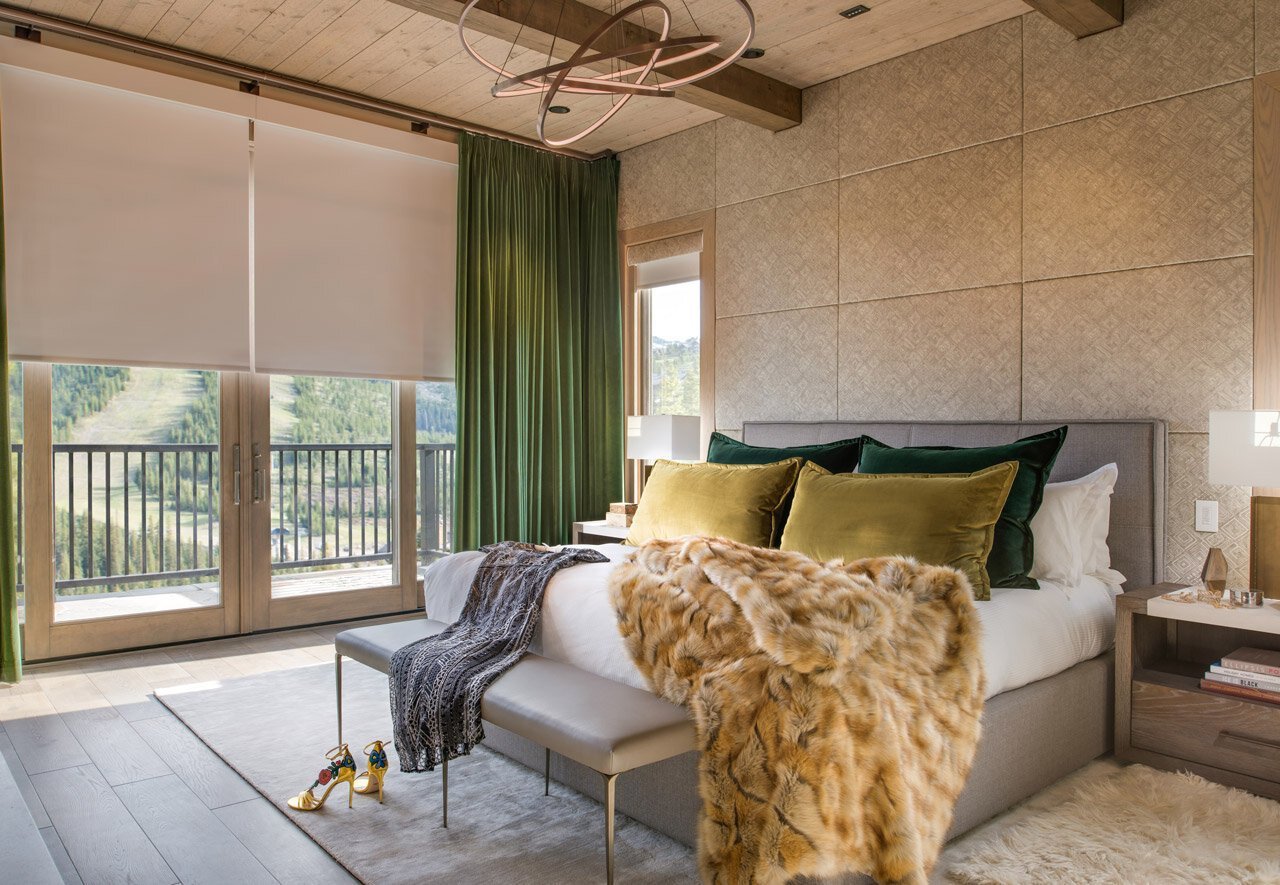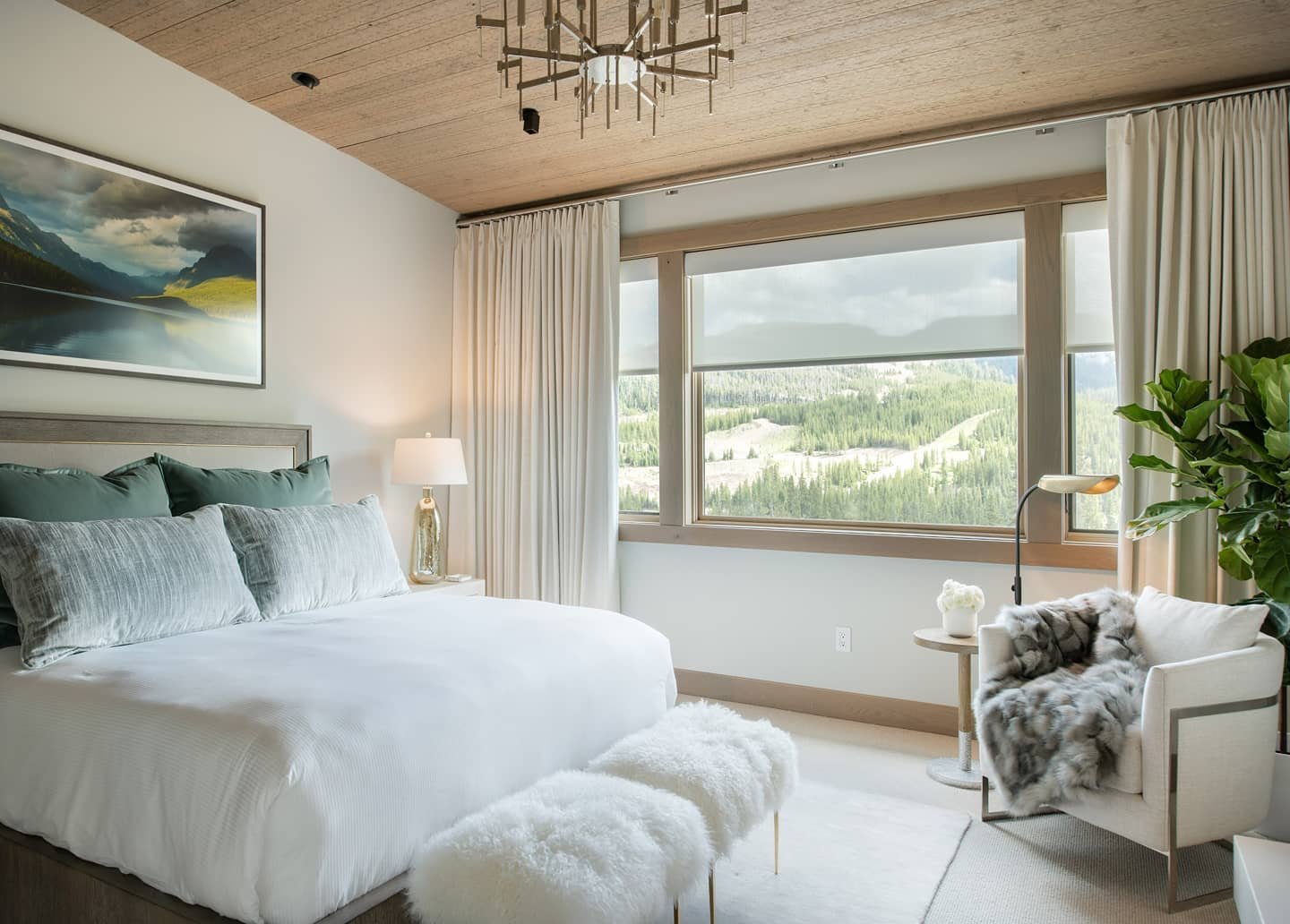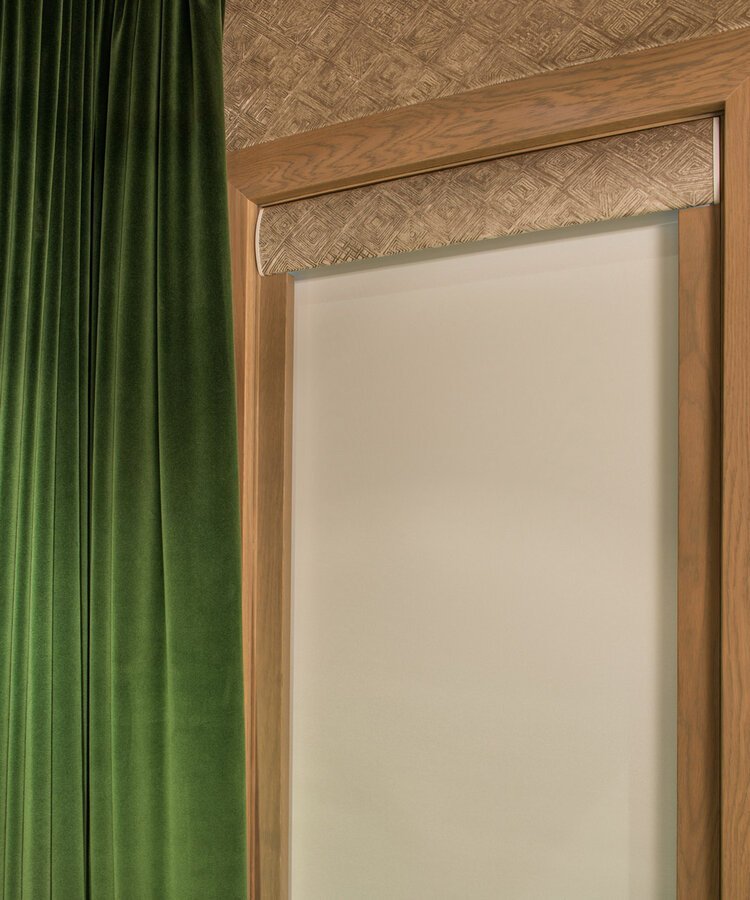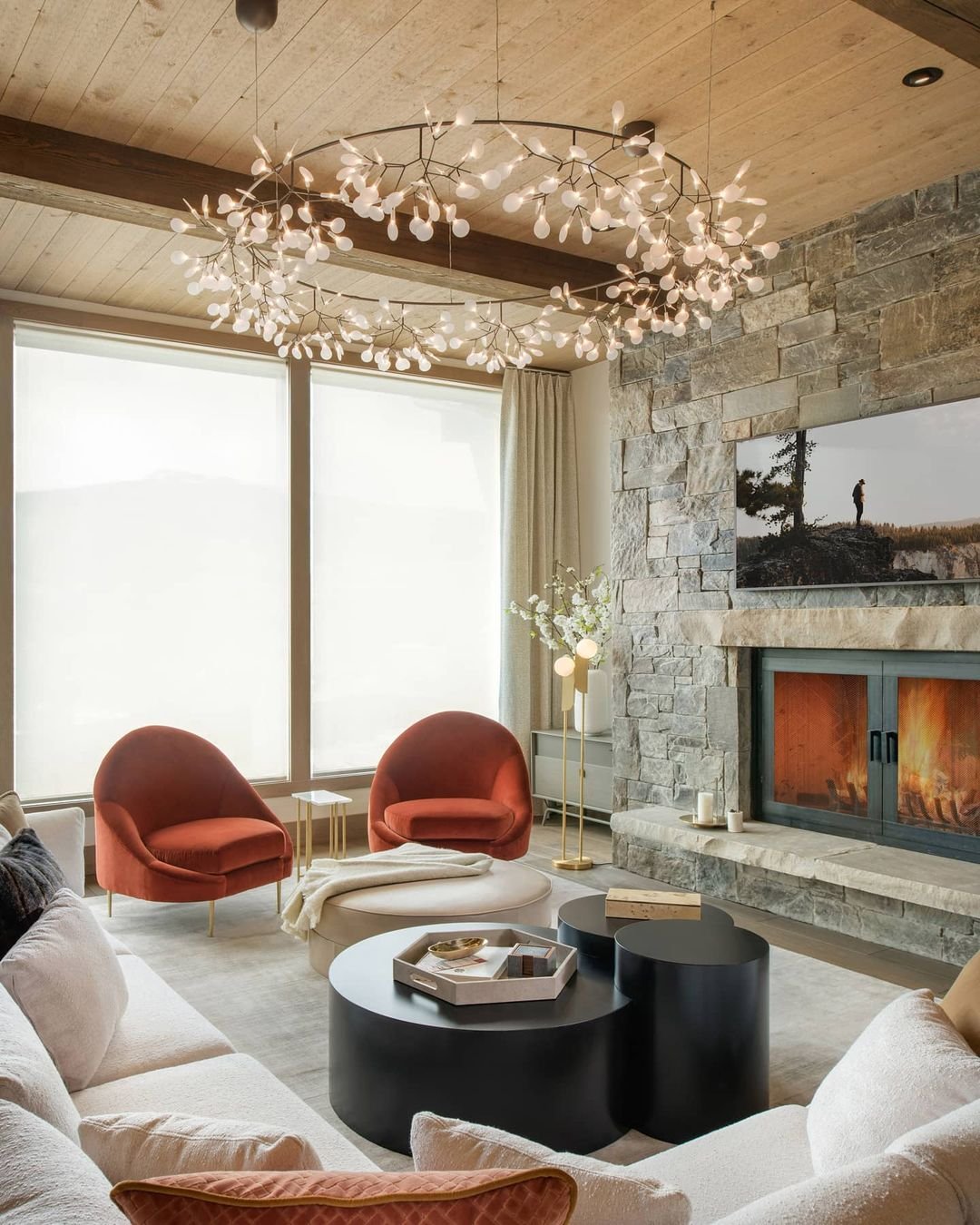Design with Light
Motorized Shading in a Modern Mountain Retreat
Lutron's Palladiom Collection of wall controls and motorized shades offers an elegant but unobtrusive aesthetic in this modern mountain retreat. This case study can help increase specifier relationship-building and create new recurring lead sources as a real-world example of motorized shading designed right.
It's All About the View
The floor-to-ceiling windows of this mountain retreat near Big Sky, Montana, show off a breathtaking vision of nature: snow-capped mountains, towering trees, the lush downhills of the nearby Big Sky ski resort.
In early summer, the landscape is a rich green; a few months later, snowy white. Either way, it’s the epitome of why the area is an open-air playground for the affluent and adventurous.
When you’re presented with such a view balanced between heaven and earth, it’s important to present it with air and make sure it doesn’t overwhelm the rest of the home.
It’s about designing with light.
That’s where Lutron solutions come in, particularly the exquisite Palladiom Collection of wall controls and shades. For these views, Palladiom shades offer an elegant but unobtrusive aesthetic, featuring whisper-quiet movement, meticulously finished shade hardware, and an overall sleek and intuitive design.
“The clients were looking for a home that wasn’t overly ornamented. They wanted something clean and beautiful. Palladiom was the obvious answer,” says the Design Director at Alder & Tweed Design Co. “It’s minimal, it’s clean, and it does its job without announcing it loudly in the space.”
Managing the Light
Lutron shades and lighting controls addressed a number of challenges facing the home’s interior design—most notably, controlling a light that is affected not only by the time of day and time of year, but also by the altitude of the mountain resort.
“We’re at 6500, 7500 feet. People need to realize that at that elevation, [light is] that much more intense,” says Alder & Tweed. “We really need to manage that through careful shading—we need to look at the opacity level of the shades, and the controls that people have to operate them.”
Adds architect Sloan Bauer of Bayliss Architects, “A lot of people think that in the summer the sun’s the brightest. Well, when you’re completely surrounded by snow, winters seem brighter. So you need the shades to help block that extra light gain. Even on a cloudy day, [with] all that white, you need something to help control the glare.”
He observes that shades almost always factor into his designs—any awning, eave, or overhang would have to extend an absurdly large distance from the window for the same light management.
“Every space has a function,” he says. “Lighting control systems are integral in that. In these modern homes, that get control systems, you don’t set them up as a light switch—you set them up as a mood switch for how you want it... They’re integral in making those spaces more habitable and more enjoyable.”
A Range of Solutions
Lutron solutions addressed these issues intelligently—and beautifully—with a range of solutions.
For the expansive great room, with its giant windows, Palladiom shades were chosen with screen fabric in 3% White/White with Satin Nickel jamb brackets.
The shades blend seamlessly into the room’s décor, not only regulating the light, but preventing glare on the TV screen and protecting the floors and furnishings from fading, including the “beautiful rosy chairs” that draw attention to the view.
“As designers, it’s fantastic to be able to use a great deal of color,” says Alder & Tweed. “However, you want to make sure you take care of the upholstered fabric furniture. Automated shading is a huge part of that. Palladiom shades allowed us to take care of the fabric and take great care of the color.”
In the master bedroom, where a set of floor-to-ceiling windows welcome the day each morning, we employed Lutron’s automated drapery track with opaque fabric panels and blackout roller shades to ensure privacy.
“In designing bedrooms, you really need to think about privacy. It’s a big issue for clients. An opaque panel really helps with that,” Alder & Tweed says. “Blackout shades are also a massive part of controlling light. People need darkness to sleep. With Lutron’s blackout shades we can control for that and we can provide them the rest they need.”
Alder & Tweed also made use of a fabric-wrapped valance option to mesh with the upholstered wall. “It makes the valance disappear into the window and the interiors, which is a gift to the entire design.” Lutron designs also provided flexibility in complementing the upholstered wall.
Flexibility, in fact, frequently came into play. Other rooms had distinct ceiling features, such as exposed beams, decorative molding or vaulted designs, which meant systems had to fit a variety of spaces, including those where it was a challenge to add a pocket. The exposed Palladiom shade brackets solved the problem beautifully.
Even technological integration itself was a factor. With six bedrooms, six-and-a-half bathrooms and three floors, the many home-based systems— including smart TVs, audio, HVAC, and security – had to be able to talk to one another.
“Our goal was to integrate technology in a way that’s incredibly seamless and that blended into the environment of the home itself,” says Nels Tate, project manager at HTA Certified SAV Digital Environments in Bozeman. “With a wide variety of shade styles – wired, recessed, battery- powered, automated drapery—we could give Alder & Tweed a number of options, while ensuring simple integration and unbeatable reliability from Lutron.”
One guest bedroom had a large transom window over a sliding door, requiring an innovative solution to moderate the light while maintaining the room’s charm.
“We put a Palladiom shade over the transom, as well as an automated drapery that came across the window for blackout at night for sleeping,” says Alder & Tweed. “Not only did we get daylight control, but we also got a functional blackout.”
“Lutron technology helped establish the gracious atmosphere throughout the home,” says Tate.
With all of this technology it was important that wall controls were accessible but unobtrusive. “We had a lot of conversations with Alder & Tweed, the architects and the construction teams to get this technology seamlessly integrated into place.”
The result is a house that’s elegant and intimate, graceful and functional, where the furnishings complement the design, and the scene outside the window is an extension of the residence itself.
“Where we design has some of the world’s most spectacular views, and if you don’t capture them, you’ve missed the whole point,” says Bauer.
Lutron, he adds, is not only an essential part of these high-end homes, but can grow with a resident’s needs.
“You can start on a very small scale and do one or two rooms at a fairly low cost, or you can get whole-home automation systems at a higher price point. Lutron solutions can expand with your needs especially if you pre-wire for shades and controls, as we did.”
As for Alder & Tweed, Lutron was a perfect for their design goals.
“I truly believe that if we do our job right, we’re creating a space that’s a physical representation of someone’s best self,” says the Design Director at Alder & Tweed. “If you get the interior right, someone will walk in and feel like for the first time someone really heard them, listened to them, cared about them and recognized who they are. That’s the gift of what I do.”
Two words from the customer summed up the whole experience... “We got a text, ‘So beautiful’. It makes us so happy as designers, when you work so hard and you care so much, and you put so much into the design, to have it be that simple: ‘So beautiful.’ ”
That’s a view worth sharing.
By the Home Technology Association (HTA)






